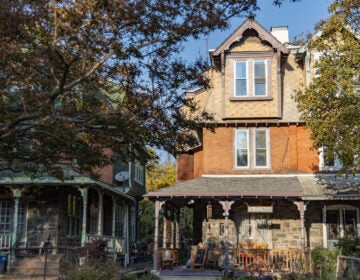Before razing North Philly apartments, telling its stories and history
-
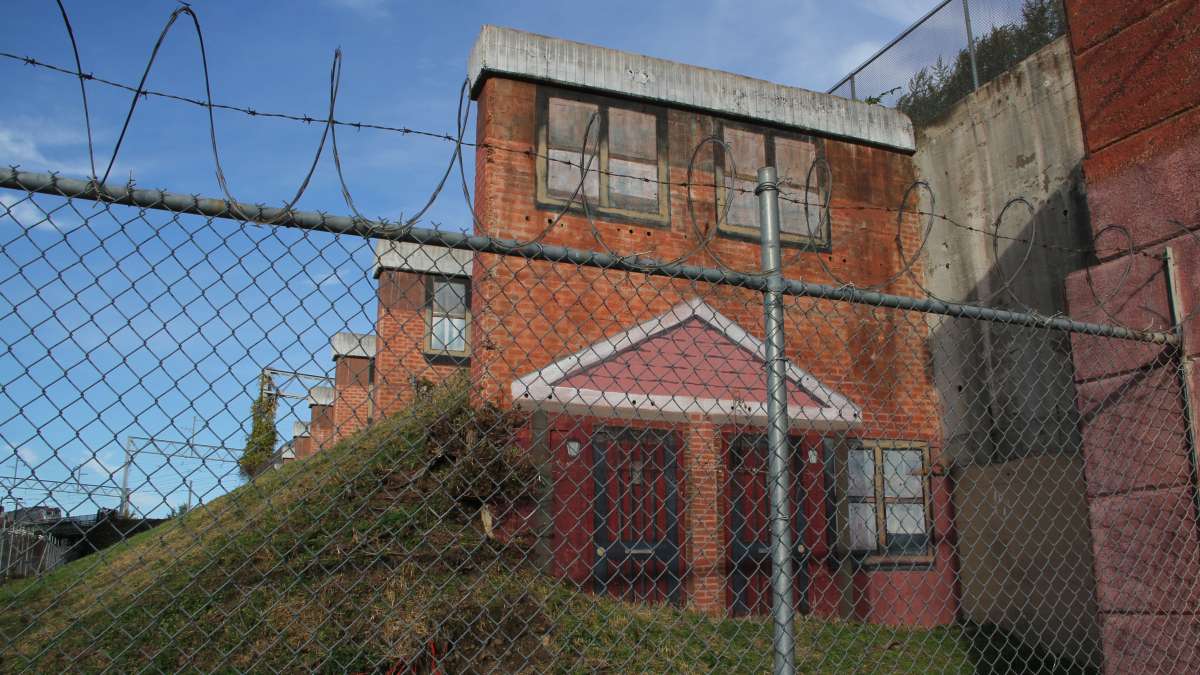
The Norris Homes public housing project will be memorialized in a mural by Jennie Shanker. (Emma Lee/WHYY)
-
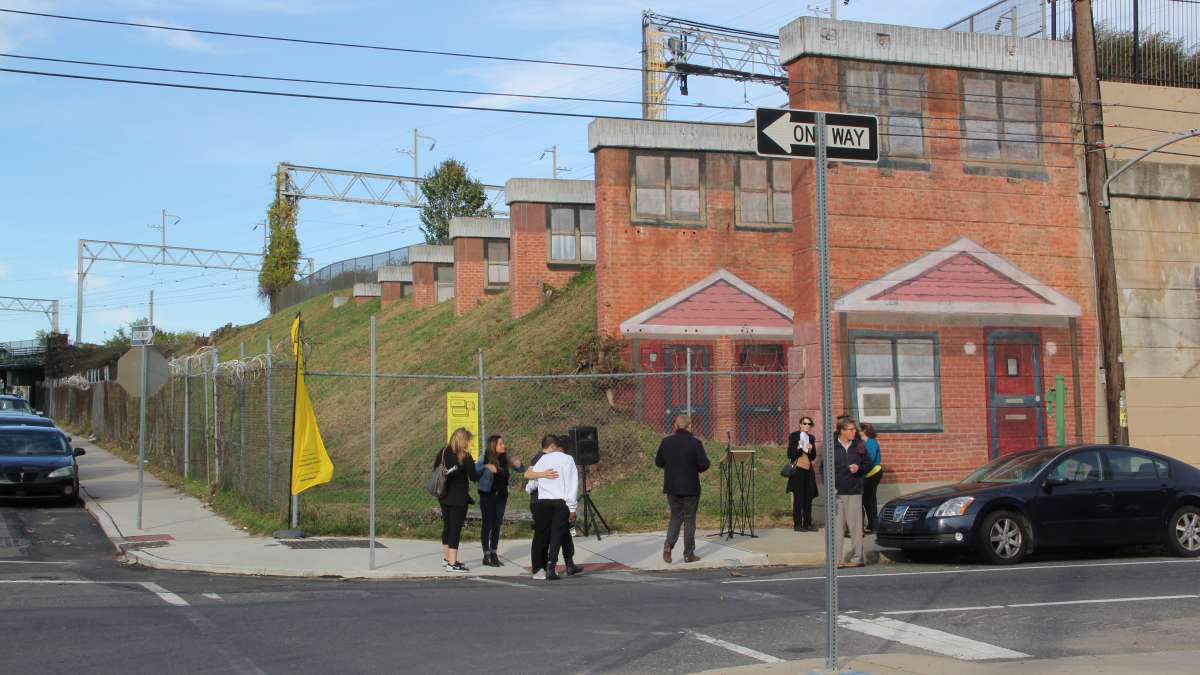
Painted on the buttresses of a railroad embankment, the mural will memorialize the Norris Homes housing project, slated to be razed and rebuilt. (Emma Lee/WHYY)
-
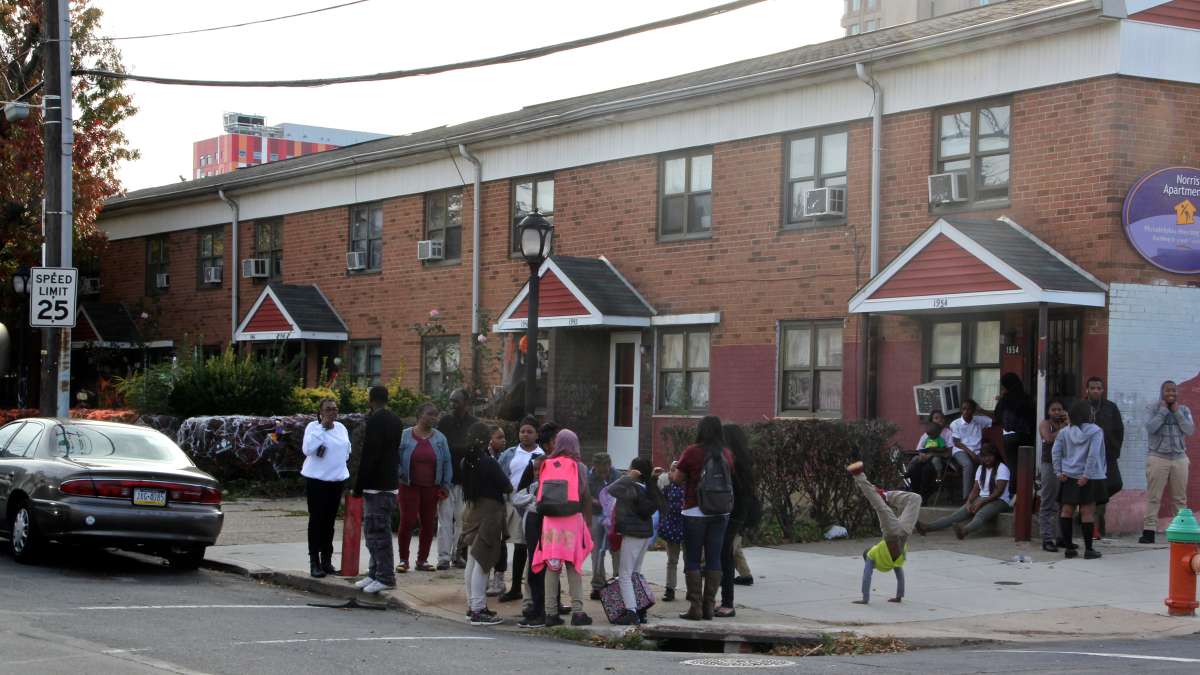
Norris Homes residents gather on the corner of 10th and Norris streets for the dedication of Norris Homes Historical Marker, a mural by Jennie Shanker. (Emma Lee/WHYY)
-
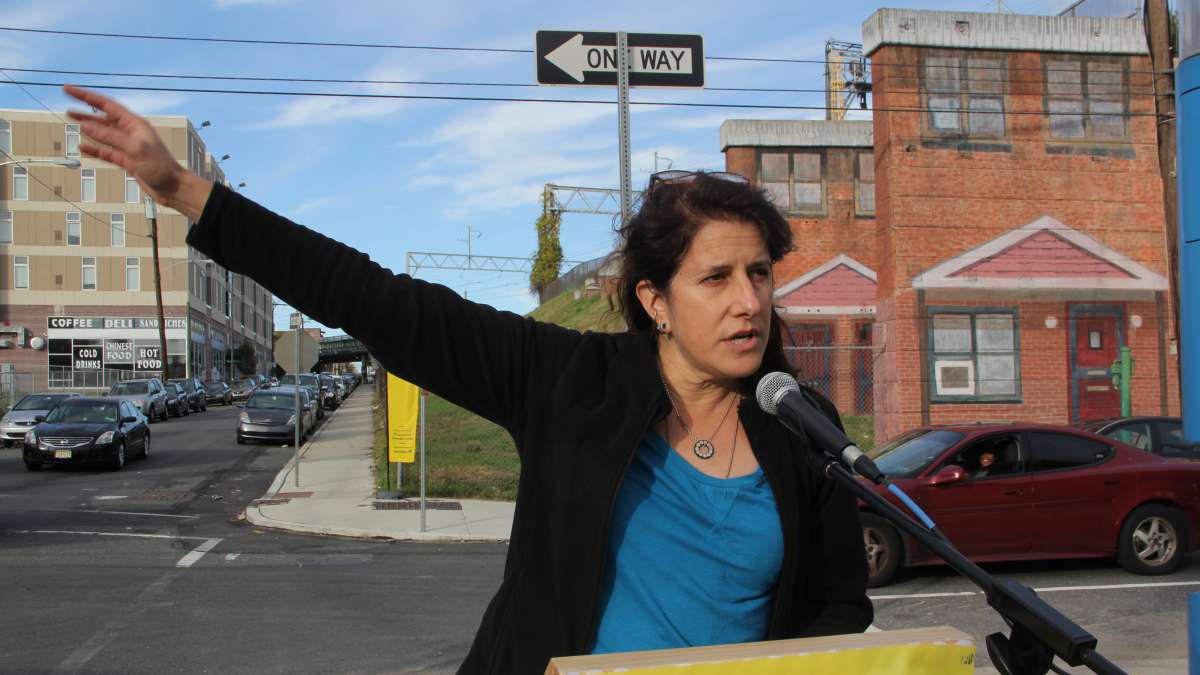
Artist Jennie Shanker speaks at the dedication of her work, Norris Homes Historical Marker, produced as part of the Mural Arts Open Source project. (Emma Lee/WHYY)
-
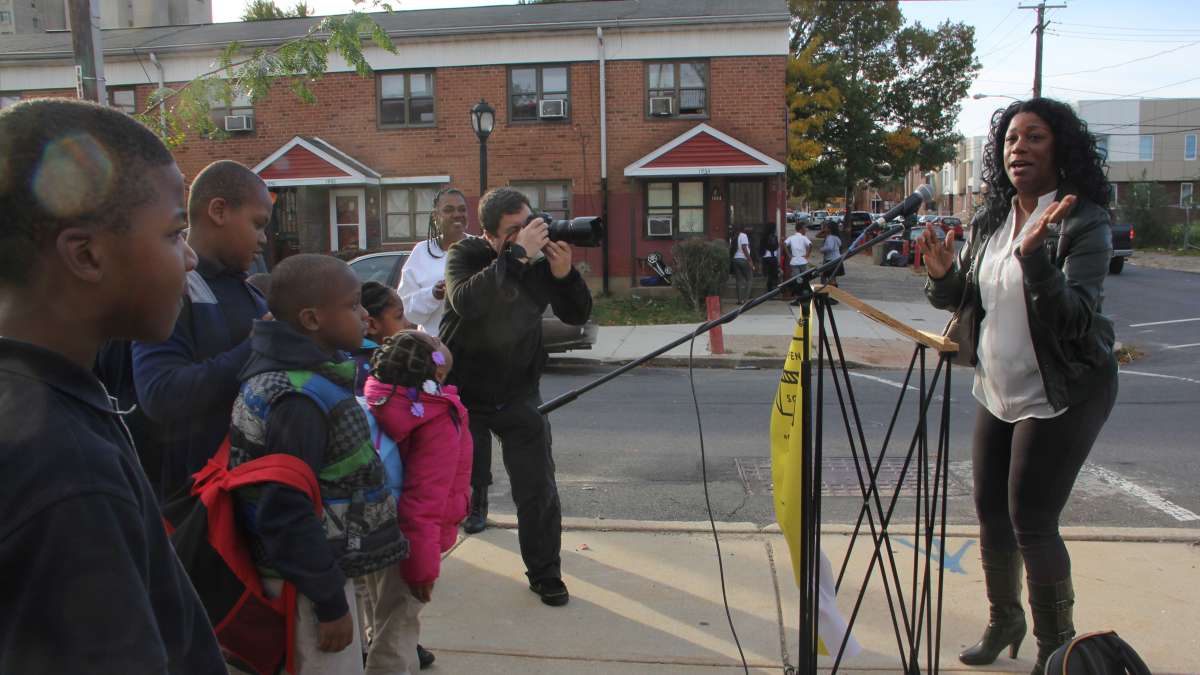
Donna Richardson, president of the Residents Council at Norris Homes, speaks during a dedication ceremony. (Emma Lee/WHYY)
-
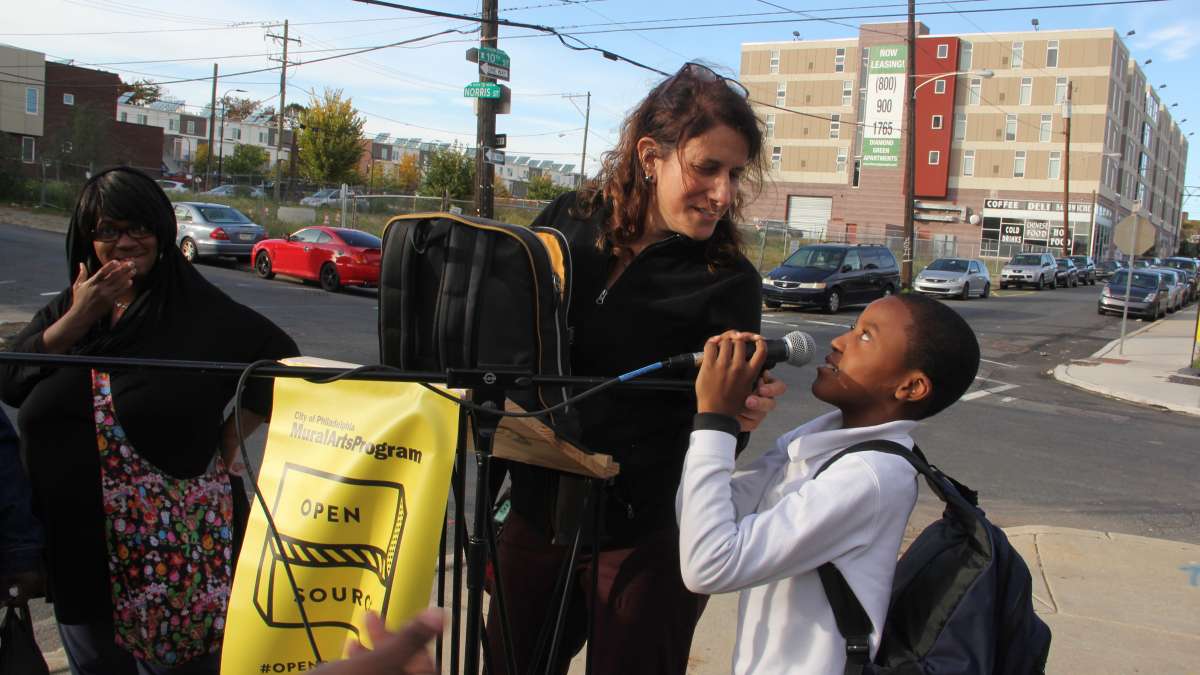
A young Norris Homes resident steals the show during a mural dedication ceremony. Artist Jennie Shanker worked with residents to memorialize the homes, which will be razed and rebuilt. Another phase of her Open Source project will document what happens to members of the community as it disperses. (Emma Lee/WHYY)
-
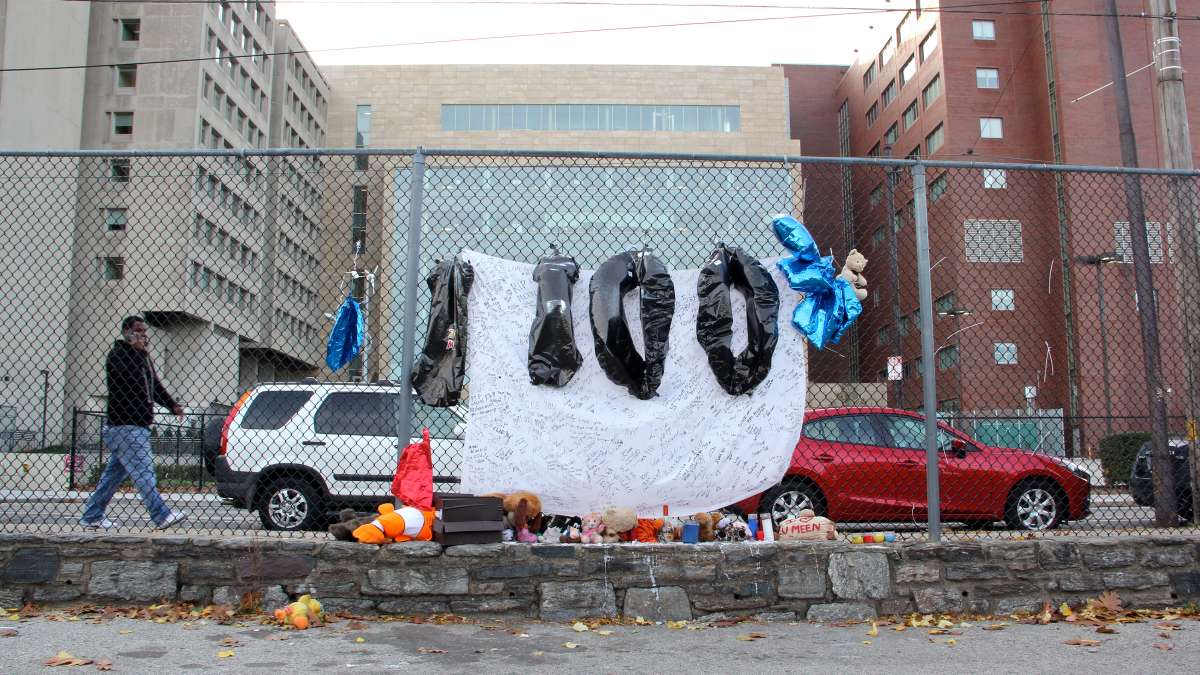
A memorial to a former Norris Homes resident who died of a drug overdose hangs from the fence around the housing project's playground and basketball court, opposite Temple University's Science Education and Research Center. (Emma Lee/WHYY)
-
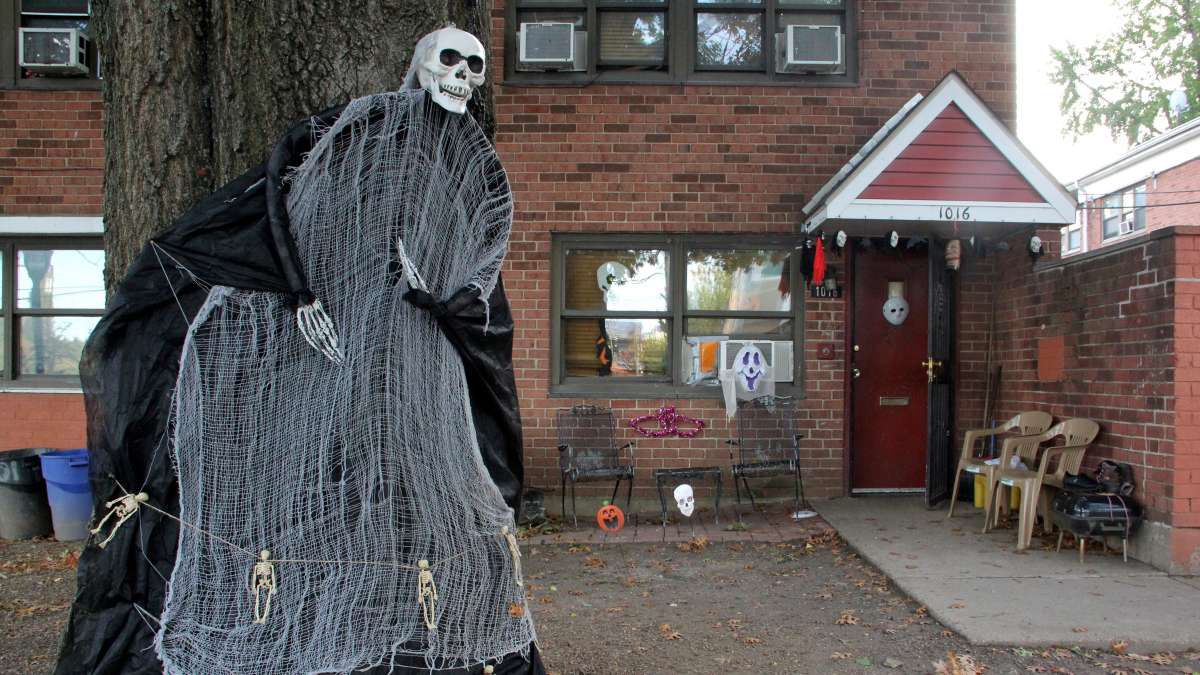
A Norris Homes apartment is decorated for Halloween. The public housing project will soon be demolished and rebuilt. Many of its residents hope to return in 2020. (Emma Lee/WHYY)
In a few years, the Norris Apartments, a public housing project in North Philadelphia will be razed and replaced by mixed-income housing.
The Norris Apartments, a public housing project in North Philadelphia, has cultivated a community of residents since it was built in 1952. In a few years, it will be razed and replaced by mixed-income housing.
On the eve of its transformation, a local artist is memorializing that community through oral histories, and a mural.
“The housing will be very nice. It’s no question, it will be nicer than what is here now,” said Jennie Shanker. “The question is what happens to the community.”
Shanker says histories of low-income people are rarely documented and easily forgotten. Through the Mural Arts Program and its city-wide Open Source exhibition, Shaker painted the facades of the old Norris buildings on the retaining walls of a nearby SEPTA railroad bed, resembling a line of dominoes.
“Who is going to know anybody was here?” asked Shanker. “The mural will ensure this community is recognized, and the stories, history, and lives here don’t disappear along with the architecture.”
In 2011, the Norris Apartments high-rise building was torn down and replaced with new housing units, but the original Norris Apartment low-rise buildings remain, looking the worse for wear. Those buildings will be among the first in the country to be demolished and replaced through a new federal housing initiative, Choice Neighborhoods.
To avoid concentrating poverty, the feds will chip in $30 million toward a public-private partnership to develop a mixed-income neighborhood. According to U.S. Housing and Urban Development, an additional $169 million of public and private funds have been committed.
A similar development is underway in Pittsburgh, where Choice Neighborhoods has also committed $30 million toward new housing and improved infrastructure. Both sites in Philadelphia and Pittsburgh have broad plans to leverage the federal dollars to improve parks, streets, transportation, and schools.
Like in Pittsburgh, residents in Philadelphia are anxious about the move, and if the new neighborhoods will be walkable. In Philadelphia, the Norris Apartments are across the street from the expanding campus of Temple University.
“I don’t think none of us coming back,” said Joann Simmons, a 25-year resident. “I think Temple got this. Look at Broad Street. Broad Street ain’t going to be Broad Street soon. It’s going to be Temple Avenue.”
Simmons comments were recorded as part of Shanker’s oral history project. During the phased demolition and rebuilding process — expected to begin in 2017 and complete in 2020 — Shanker will document stories of residents and make them available as videos on a website.
In her personal history video, Simmon’s describes raising two daughters at Norris Apartments, and monitoring everyone else’s children every afternoon when they came back from school. She is known affectionately as Miss Jo.
“These stories will help people understand how rich people’s lives are, how caring people are, how much leadership there is in the community, and what’s at stake when you break up a community,” said Shanker.
There are more than 500 people living in the 147 units of Norris Apartments. If current on rent, they are all guaranteed units in the new development. Donna Richardson, the resident council president, is trying to make sure everybody will be able to find each other in the new neighborhood. She says some of the older residents might not survive without familiar neighbors.
“Like William Burton — he don’t have any family,” said Richardson, referring to an 83 year-old resident at Norris. “He was an orphan. His wife died last year. So we do his phone bills, we make sure his rent is paid, make sure he gets to the bank. If he moves he will lose that.”
The phased development process should ensure nobody will be forced into temporary housing. Sections of new housing will be built before corresponding sections of old housing is razed, so residents will be able to move directly into new homes as they are built, on a staggered timeline.
WHYY is your source for fact-based, in-depth journalism and information. As a nonprofit organization, we rely on financial support from readers like you. Please give today.





